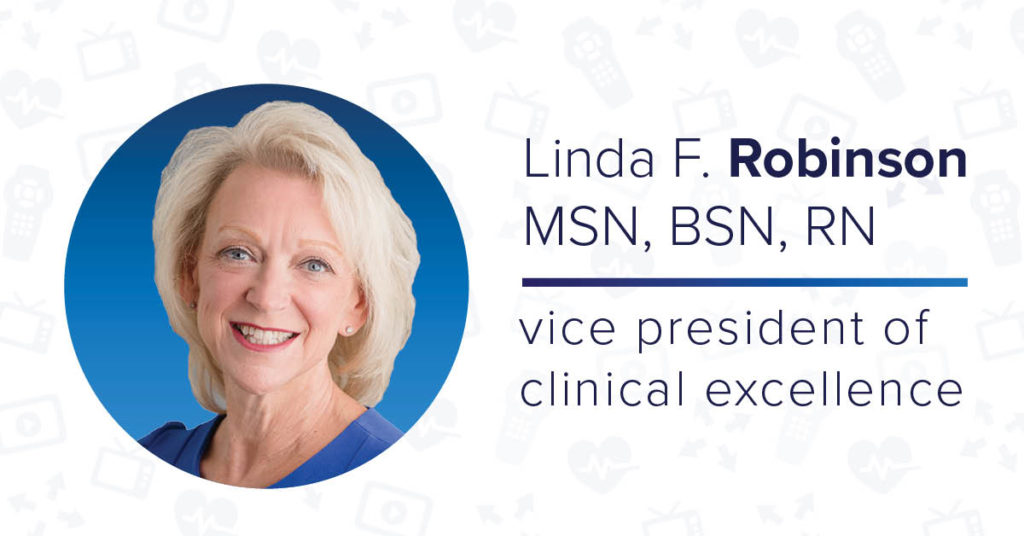Assessing the Situation
The American College of Nursing reported a concerning problem for the healthcare industry, a nursing shortage which began prior to 2017 but was further impacted by the COVID-19 pandemic. Linda Robinson, the Vice President of Clinical Excellence at MDM Healthcare, has been a nurse for over 34 years and went back to work as an experienced nurse during the pandemic. She states,
“Truly the profession I have worked in for 34 years is forever changed. During the pandemic, healthcare workers were dubbed by the media and the community as superheroes. However, the reality was much harsher. The COVID-19 pandemic left healthcare workers, especially nurses, feeling bruised and battered. I saw it many times when I was working during the pandemic, I heard it, I felt it, and I can tell you many of them did not feel like heroes. They felt like they were coming to work and they were fighting an unwinnable battle and they couldn’t escape it.”
Recent research from a national survey of nurses conducted by the American Association of Critical-Care Nurses (AACN) reveals that during the past few years, “the health of nurse work environments has declined dramatically.” The report indicates that among many key factors, nurses have perceived a decline in communication and collaboration in their work environment and appropriate staffing (the right number of RN staff with the right knowledge and skills) to be major concerns. It states, “The impact of this further decline in the appropriate staffing of nurses is likely to have long-standing effects on nurse well-being and patient safety if not corrected expeditiously.” The study also reveals a dramatic decline in how nurses rated the quality of care in their organizations and work units.
The Experience Complexity Gap
Robinson states that the COVID-19 pandemic accelerated an already difficult problem. “Nurses started leaving the workforce in very large numbers. We had experienced nurses leaving due to burnout. New nurses were entering the workforce, and they were unprepared for the intensity of the pandemic. The mentors were not available, and new nurses didn’t have the advantage of the new hire training and preceptorship that they normally would have received. Many times, these new nurses were put right on COVID floors to take care of COVID patients, and they were just simply unprepared for that. Because of all this, we saw a worsening in the experience complexity gap, which is really the heart of the nursing shortage.”
Robinson referenced solutions outlined in the framework to optimize healthcare performance, which was developed by the Institute for Healthcare Improvement (IHI) in 2007 and recently revised. Robinson explains what used to be the triple aim to improve healthcare system performance, a framework built around reducing costs, improving population health, and patient experience, has now evolved to the quadruple aim, to include healthcare team well-being into the framework.
Bold Changes
The new healthcare landscape with all of its challenges is transforming rapidly in healthcare,” said Robinson. She referenced a study recently published by McKinsey & Company on retaining the healthcare workforce. It states, “Organizations may consider how to leverage digital tools and adapt care models. Although the experiences of 2020-2021 have impacted every profession, few have been more impacted than the nursing workforce. The trauma and moral distress of the past years have exacerbated work force vulnerabilities, but also provide a unique opportunity to accelerate changes (for example, technology-enabled care models) and make bold investments in what the future of nursing could look like.”
Robinson suggests the future of nursing rests on transforming care delivery models and leaning down clinical workflows for healthcare teams, which can be accomplished today using new technology.
“Largely nurses were underappreciated, and I think it’s come to the forefront from the pandemic. We really must take care of our nurses and ask ourselves: how are we helping them with work-life balance? Also, how are we helping them with workflow optimization? That’s something that we work very diligently on at [MDM Healthcare’s cloud-based patient experience platform] Journey PX because we really want to be that partner that helps lean down nursing, clinician, and provider workflows. Our goal is to help them do what they do better and give them the ability to have a presence in the room, even if they’re not actually in the room.”
The McKinsey study suggests these changes would be embraced by nurses and patients alike. It states, “As hospital systems contemplate new ways to embed virtual elements into nursing workflows to improve safety, quality, and efficiency, they are likely to find an enthusiastic workforce. Roughly two-thirds of frontline nurses are interested in providing virtual care in the future.”
The study also suggests that the impact of technology has the capacity to help change care delivery models will result in reducing the need for nurses. It states,
“for every 1 percent expansion of capacity, created through changes in care delivery models, technology-enabled productivity tools, or alternative sites of care settings for patients, the number of nurses needed would decrease by about 25,000.
As the healthcare industry recognizes the need for change and embraces technology solutions, there is some renewed hope that hospital care teams can recover from the challenges they have faced in recent years.
“Nursing truly is a calling. They’re at our sides at birth throughout our lives, during illness, hardship, and even death. We really have to hold onto our nurses and take care of them,” says Robinson.
Listen to the full interview on the PX Space podcast available on Apple Podcasts, Spotify, and Amazon Music.







